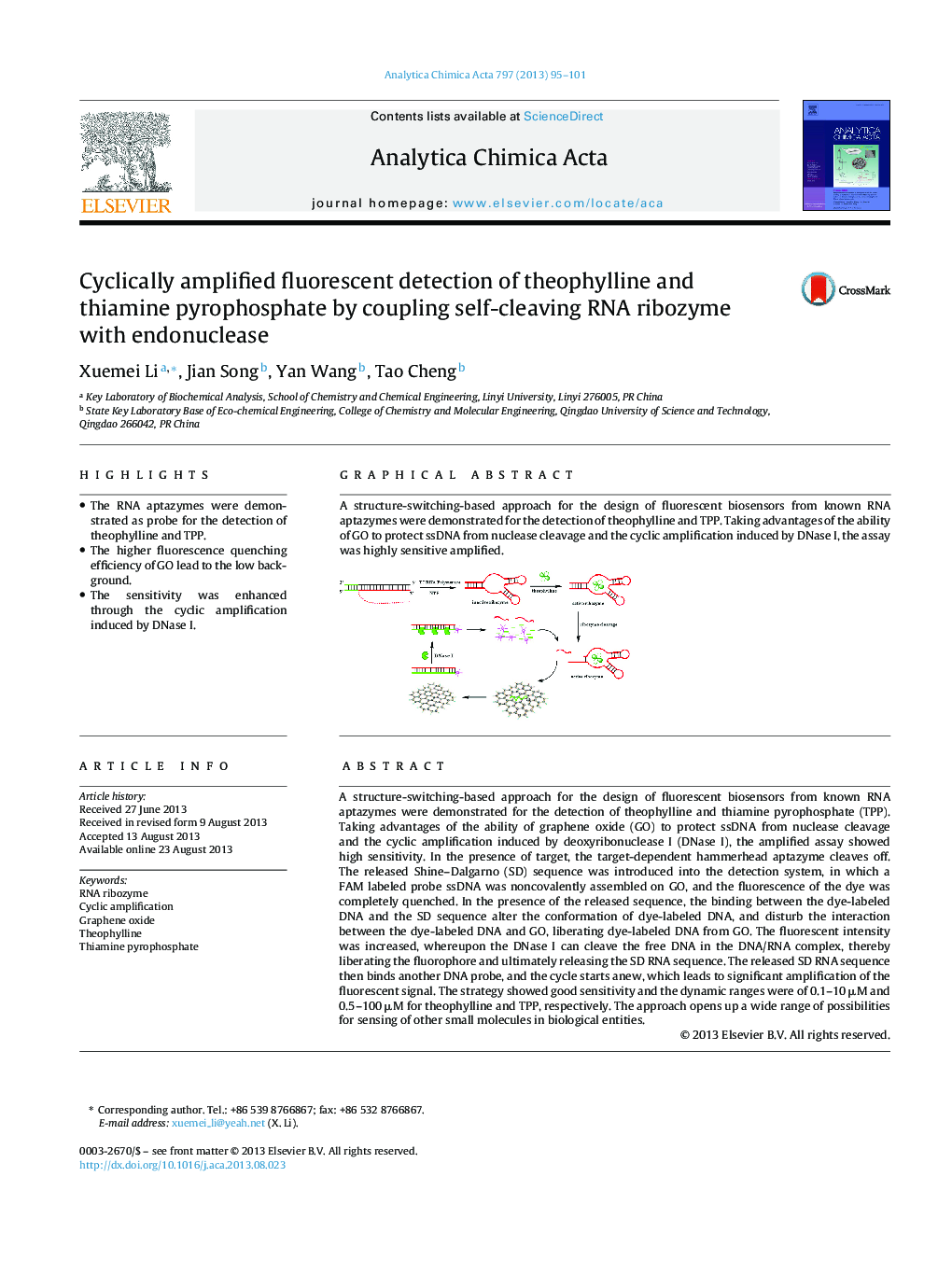| کد مقاله | کد نشریه | سال انتشار | مقاله انگلیسی | نسخه تمام متن |
|---|---|---|---|---|
| 1164530 | 1491035 | 2013 | 7 صفحه PDF | دانلود رایگان |

• The RNA aptazymes were demonstrated as probe for the detection of theophylline and TPP.
• The higher fluorescence quenching efficiency of GO lead to the low background.
• The sensitivity was enhanced through the cyclic amplification induced by DNase I.
A structure-switching-based approach for the design of fluorescent biosensors from known RNA aptazymes were demonstrated for the detection of theophylline and thiamine pyrophosphate (TPP). Taking advantages of the ability of graphene oxide (GO) to protect ssDNA from nuclease cleavage and the cyclic amplification induced by deoxyribonuclease I (DNase I), the amplified assay showed high sensitivity. In the presence of target, the target-dependent hammerhead aptazyme cleaves off. The released Shine–Dalgarno (SD) sequence was introduced into the detection system, in which a FAM labeled probe ssDNA was noncovalently assembled on GO, and the fluorescence of the dye was completely quenched. In the presence of the released sequence, the binding between the dye-labeled DNA and the SD sequence alter the conformation of dye-labeled DNA, and disturb the interaction between the dye-labeled DNA and GO, liberating dye-labeled DNA from GO. The fluorescent intensity was increased, whereupon the DNase I can cleave the free DNA in the DNA/RNA complex, thereby liberating the fluorophore and ultimately releasing the SD RNA sequence. The released SD RNA sequence then binds another DNA probe, and the cycle starts anew, which leads to significant amplification of the fluorescent signal. The strategy showed good sensitivity and the dynamic ranges were of 0.1–10 μM and 0.5–100 μM for theophylline and TPP, respectively. The approach opens up a wide range of possibilities for sensing of other small molecules in biological entities.
A structure-switching-based approach for the design of fluorescent biosensors from known RNA aptazymes were demonstrated for the detection of theophylline and TPP. Taking advantages of the ability of GO to protect ssDNA from nuclease cleavage and the cyclic amplification induced by DNase I, the assay was highly sensitive amplified.Figure optionsDownload as PowerPoint slide
Journal: Analytica Chimica Acta - Volume 797, 3 October 2013, Pages 95–101